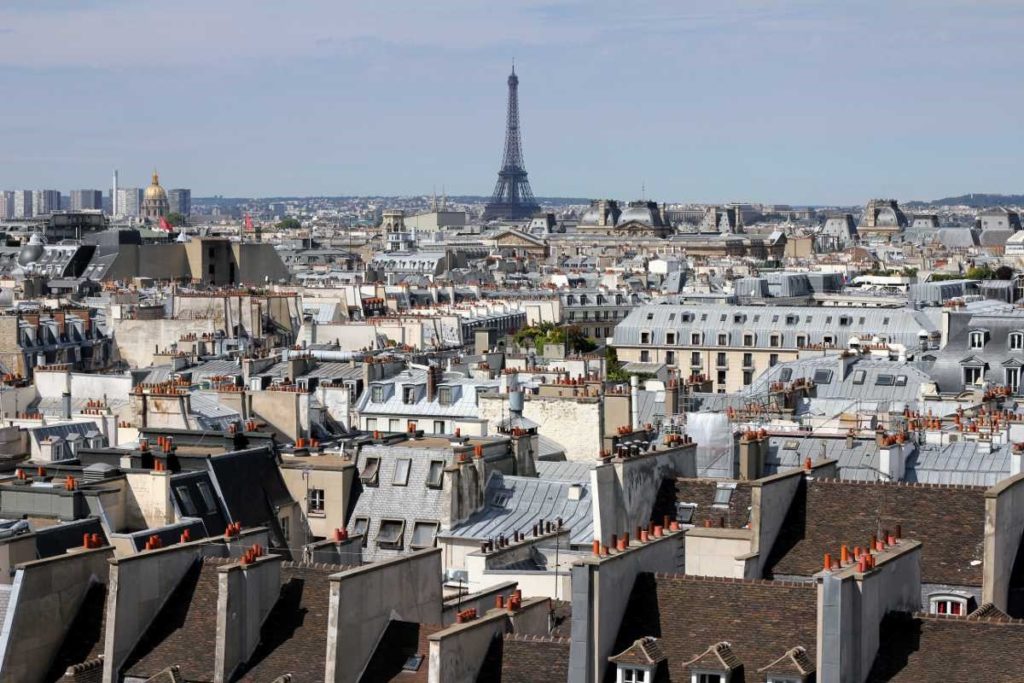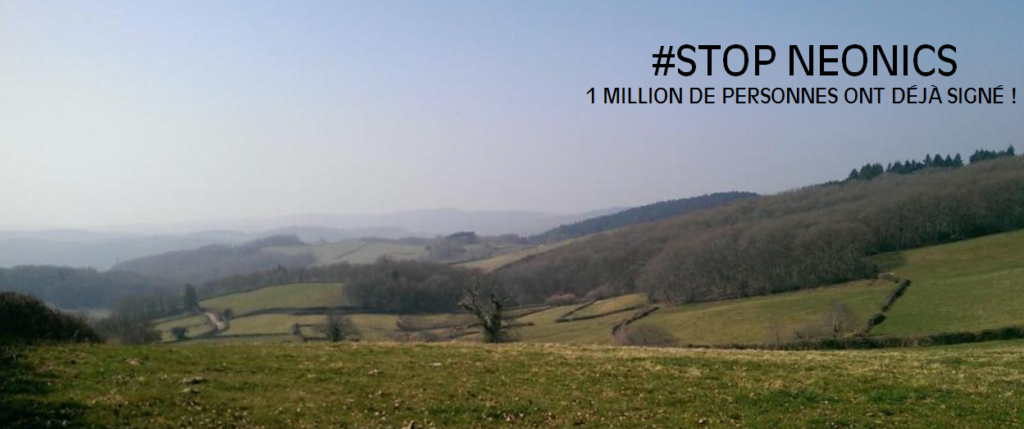On May the 1st we took to the woods. If you go down a track in the Forêt de Brotonne – the Forest of Brotonne – you’ll come across a small chapel: the Chapelle Saint Maur. It is surrounded by beech trees and hornbeams where bits of cloth dangle from the branches. Other branches have been twisted in knots, similar to those at the Chapelle Saint Thomas.
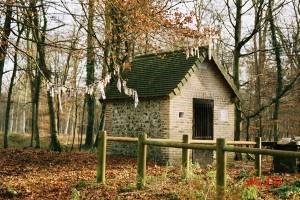
Saint Maur, born 512, was sent from Rome to establish Benedictine monastic life in France, performing many documented miracles along the way. Here in the Forêt de Brotonne local people believed – and some still do – that he can cure bone disorders. People come here today not only to lay offerings on the Christian altar in the chapel, but also to invoke the saint’s healing powers by hanging up prayers on pieces of cloth in the surrounding trees.
We thought we were alone as we walked down the track, but suddenly fell on a host of people quietly gathered in front of the chapel. Some were standing, others sitting on wooden benches. There were families with babies and children; several hunting horses with their riders stood under the trees, everyone quietly watching a priest in his long white robe officiating at a wooden altar in front of the chapel.
To the priest’s left and just behind him sat a muted brass band, instruments laid out on their laps while he gave his sermon and recited prayers. The silent concentration of the crowd was remarkable, even if some of the children grew fidgety and started to run around in the trees, quietly. The horses champed at their bits, some pawed the ground, their riders in dark green hunting jackets reining them in, bugles looped round their shoulders. And all the while the priest’s incantations filtering up through the branches to the sky above.There were hikers and riders too who, like us, stopped in their tracks to share the Mass.
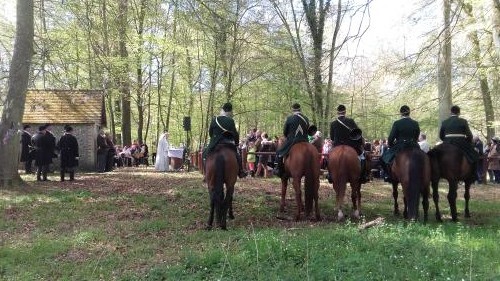
Because every 1st of May, history, superstition, and religion come together in a celebratory Mass to open the yearly fete of the local village 3 kilometres away at Vatteville-la-Rue. Mass has been celebrated here since 1957.
This chapel, dedicated to Saint Maur, dates back to 1880 and was raised on the site of a hunting lodge built in 1602 by King Francois 1er who had a royal residence in Vateville-la-Rue. The Forêt de Brotonne – previously named la Forêt d’Arelaune – was already a royal domain in the 6th century under the Merovingians, but the Vikings invaded and ripped it up. Later, in 1204, Philippe Auguste re-reclaimed the forest as a royal domain and from then on it played an important economic role in the area, providing wood for construction, heating, welding, and a home for bees and honey production. The 17th century saw King Louis XIV’s influential Minister Jean-Baptiste Colbert managing the forest products for maritime trade and construction to serve a growing urban population.

But to get back to the chapel and Saint Maur. People suffering from rickets and bone disorders still come here to hang up their prayers and wishes on the branches of these arbres à loques.(‘rag trees’) which surround the Saint Maur Chapel. Others still tie knots in the branches. Rickets – rachitisme in French – and osteomalacia, the adult form of rickets, is a softening of bones due to lack of vitamin D. When rickets in children was rife up here in the last centuries, it was originally believed that if the knots they made in the branches came undone, a baby would be born healthy; later the belief metamorphosised and became to mean that tying the knots staved off bone malformations. In Normandy there are, in fact, many healing saints for rickets, Saint Maur being only one of them. Others are Saint Germain, Saint Jouvain, Saint Hermain, Sainte Denise…The lack of sunshine in Normandy during the autumn and winter months particularly could explain this: sunshine – it is now known – provides the vital vitamin D which helps keep bones healthy.
Rickets and osteomalacia causes bone pain and weakness in the muscles; the pain is mostly in the lower back, pelvis, hips, legs and ribs making it difficult to walk.
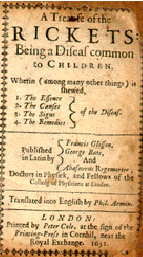
The word ‘rickets’ first appeared in print in 1634 in the Annual Bill of Mortality of the City of London, and the first known clear description of the disease was published in Leiden in the mid 1600s.* One of the first pedriatric texts published in England came out in 1651 – see picture. By the 19th and 20th Century, rickets was prevalent in children in North America and Europe. When specialists discovered in the early 1900s that lack of Vitamin D was responsible for the condition, in the 1930s counter-action measures were taken such as clearing atmospheric pollution to let the sunlight through, and food was fortified with vitamin D. But this in turn had its consequences: in the 1950s cases of Vitamin D overdose led to hyper-calcaemia, a potentially fatal condition. The scare led to people dropping their intake of cod liver oil, and supplements in infant milk and cereals were reduced. So while it was believed in the first part of the 20th century that in Europe and America rickets was basically a thing of the past, on the contrary, the 1960s saw a re-emergence of the disease.
It is still on the rise in industrialized western countries.
Recognising the recrudescence of the disease, a 5 year EU funded project called ODIN was set up in 2013 to find food-based solutions for optimal vitamin D nutrition; the title of their publication illustrates growing concerns among specialists: “Vitamin D deficiency in Europe:pandemic?” This publication has been picked up by the The American Journal of Clinical Nutrition as a serious study.
In France, growing concern led to a study in 2004 by the Calcium group of the Société Française de Pédiatrie which showed that between 1985 and 2000, 41adolescents – most from Northern France – were hospitalized with rickets. A high number of these young people were malnourished, and many were of African, African-Caribbean and South Asian origin whose skin is less able to assimilate vitamin D from sunshine. The study nevertheless warned that the general population was still at risk.
The UK has also had an increase in rickets, with 700 reported cases in England in 2013-14. The NHS says a significant number of people in the UK have low levels of Vitamin D in their blood.

So, despite the high hopes after WWII, and despite the availability of prevention treatment, the disease has never been eradicated. Reports throughout Europe still show inadequate vitamin D intake, making this a real public health concern. Issues of quality of life, morbidity and costs to the health services are being taken seriously. The disease can provoke falls – particularly amongst fragile older people who represent a growing percentage of the population leaning on national health services.
What are the causes of vitamin D deficiency today?
People work longer hours indoors; children spend less time outdoors playing and more time inside in front of a screen; older people become housebound; fear of skin cancer and premature skin ageing has led to people using strong sun-protection creams which block the sun rays. Sufficient natural dietary sources of Vitamin D are few, so supplements should be taken during winter when there is less sunshine. Dark cloudy skies rob us of this vital sun-giving vitamin. And, given the long history of this disease, it would be interesting to learn whether or not it is also hereditary.
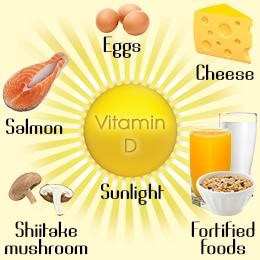
How much Vitamin D do we need?
Getting the right balance for intake is of vital importance. But it is not an easy task. The US National Library of Medicine/National Institutes of Health** emphasizes that given the differences in peoples across Europe, when recommending optimal intake of Vitamin D supplements, national, cultural and dietary habits need to be considered.
A world-wide map showing Vitamin D levels, published by the The International Osteoporosis Foundation and DSM Nutritional Products (DSM) has shown much higher values of vitamin D in people in North America than those living in Europe mainly, it is believed, because of the routine fortification of certain foods such as milk. The study shows that an estimated 50 – 70 % of the European adult population has insufficient levels of vitamin D.
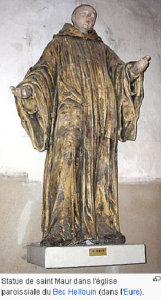
*“Rickets Before the Discovery of Vitamin D”, Official Journal of the International Bone and Mineral Society, 2013.
**http://www.ncbi.nlm.nih.gov/pmc/articles/PMC4288313/
Further references:
World Health Organization nutrition workshop: The WHO considers Vitamin D deficiency a widespread public health problem globally, and is looking into the possible consequences of this deficiency in pregnant women.
“Vitamin D deficiency: a worldwide problem with health consequences”,The American Journal of Clinical Nutrition, 2008.
“Vitamin D deficiency: a global perspective”, an article calling for “urgent need… for action to address the global burden of rickets and osteomalacia.” Nutrition Reviews , Oxford Journals, 2008.
Vitamin D deficiency map: http://www.odin-vitd.eu/public/7-european-vitamin-d-deficiency-map/










